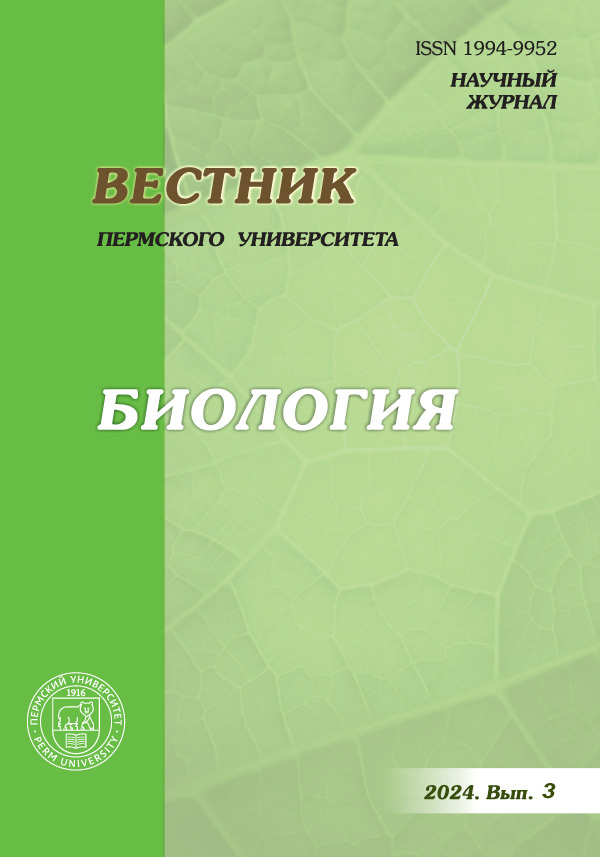Representatives of the family Teloschistaceae as a component of the vegetation cover of rocky outcrops in the Chusovaya River valley (Middle Urals)
Main Article Content
Abstract
Article Details
References
Малышева Н.В., Шмидт В.М., Голубкова Н.С. Лишайники Татарии II. Экологическое распределе-ние лишайников по субстратам. Роль субстрата в географическом распределении лишайников // Вестник Ленинградского государственного университета. Биология. 1980. № 15. С. 45–55.
Мучник Е.Э. Эпилитные лишайники Центрального Черноземья // Ботанический журнал. 1997. Т. 82, № 4. С. 46–53.
Погудина Е.В., Гришина Е.Л. Лишайники на кварцевом песчанике в долине р. Усьва и на хребте Рудянский Спой // Вестник Пермского государственного гуманитарно-педагогического университета. Сер. № 2. Физико-математические и естественные науки. 2013. Вып. 1. С. 25–31.
Седельникова Н.В. Лишайники – индикаторы горных пород // Нетрадиционные методы в исследо-ваниях растительности Сибири. Новосибирск: Наука, 1982. С. 35–40.
Селиванов А.Е. и др. Растительный покров скальных обнажений на хребте Мунин-Тумп (Северный Урал) // Вестник Пермского государственного гуманитарно-педагогического университета. Сер. № 2. Физико- математические и естественные науки. 2017. Вып. 2. С. 40–51.
Селиванов А.Е. и др. Исследование физико-химических характеристик субстратов эпилитных ли-шайников. // Лишайники от молекул до экосистем: программа и тез. докл. Междунар. конф. Сыктывкар, 2019. С. 75-78.
Флора лишайников России: биология, экология, разнообразие, распространение и методы изуче-ния лишайников. М.; СПб., 2014. 392 c.
Brodo I.M. Substrate ecology // The Lichens / V. Ahmadjian, M.E. Hale, eds. New York, USA; London, UK: Academic Press, 1973. P. 401–441.
Favero-Longo S.E., Isocrono D., Piervittori R. Lichens and ultramafic rocks: a review // Lichenologist. 2004. Vol. 36, iss. 6. P. 391–404.
Hauck M., Jürgens S.R. Usnic acid controls the acidity tolerance of lichens // Environ. Pollut. 2008. Vol. 156. P. 15–122.
Rajakaruna N. et al. Investigation of the importance of rock chemistry for saxicolous lichen communi-ties of the New Idria serpentinite mass, San Benito County, California, USA // Lichenologist. 2012, Vol. 44, iss. 5. P. 695–714.




